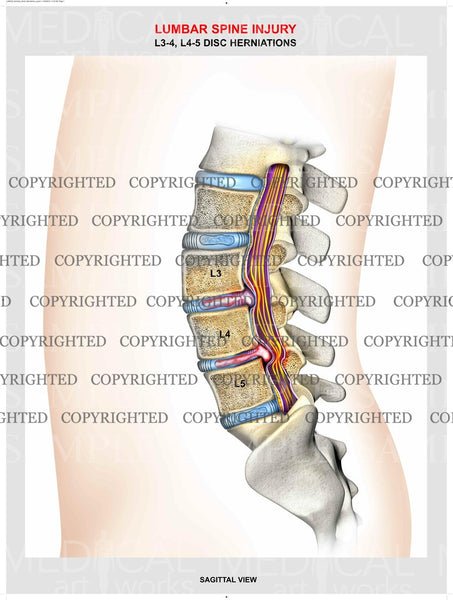
Hospital for Special Surgery: "Your Pathway to Recovery: Spine Surgery.FIG. Mater Private Hospital Brisbane: "Spinal care following surgery." Spine Institute of New York: “Post-operative.” Kaiser PermanenteP: "Spinal Surgery Handbook."Īmerican Academy of Orthopaedic Surgeons: “Preparing for Low Back Surgery.” Mayfield Clinic: “Preparing for lumbar spinal fusion.”
L2 L3 HERNIATED DISK XRAY IMAGES SKIN
National Institute of Arthritis and Musculoskeletal and Skin Diseases: “What Is Scoliosis?” Mayfield Clinic: “Degenerative disk disease (DDD).” National Institute of Arthritis and Musculoskeletal and Skin Diseases: “Questions and Answers About Spinal Stenosis.” USCF Medical Center: "Spinal Fusion for Scoliosis."Īmerican Academy of Orthopaedic Surgeons: "Spinal Fusion."Īmerican Academy of Orthopaedic Surgeons: "Adult Spondylolisthesis in the Low Back."Īmerican Academy of Orthopaedic Surgeons: "Osteoporosis and Spinal Fractures."Īmerican Academy of Orthopaedic Surgeons: “Fractures of the Thoracic and Lumbar Spine.”

National Institute of Arthritis and Musculoskeletal and Skin Diseases: "Handout on Health: Back Pain." But it's important to that you remain still so your back can heal. You might find it unpleasant, or you might not even feel it. You'll have this for the first few days so you don't have to get up to go to the bathroom. Another tube, also called a catheter, connects to where urine normally leaves your body.Some people get pain medicines through a tube in the back.One, called an IV, goes in your arm to give you fluids, antibiotics, and sometimes pain medicines.You'll also have a lot of tubes attached to you: You might get out sooner, or you might have to stay about a week.ĭuring this time, you'll be connected to machines that monitor your heart and make sure your body is doing OK. How long depends on many things, like your general fitness level and if you have any other medical conditions. A lot of swelling, redness or drainage by your woundĪfter surgery, you’ll be in the hospital for several days.You can help prevent some of these issues by watching for the warning signs of infection. Donor bone graft complications like infection or tissue rejection.After a few months, your back pain may return. Pseudoarthrosis: Sometimes the fusion doesn't work.You might lose movement, but that’s rare. Nerve injury: Numbness and tingling in a leg.These have been linked to this type of procedure: Could There Be Complications?Įvery surgery comes with some type of risk. Some doctors place a substance called bone morphogenetic protein into the spine instead. Bone from another person is called a donor graft. A bone graft that comes from your body is usually taken from your hip or pelvis. They can use screws, rods, or pieces of bone (called a graft) from another part of your body to connect the disks and keep them from moving. The joint or joints between the damaged or painful disks are removed. Posterior fusion: Your doctor goes in from the backĪfter they make the incision, they move the muscles and structures to the side to see your spine.Anterior lumbar interbody fusion: Your doctor goes in through your belly.Spinal fusion can be done one of two ways. You’ll need raised toilet seats, shower chairs, slip-on shoes, reachers, and other aids. Find out if you can eat or drink anything before your procedure.Never stop taking any medicines without your doctor's OK. Some drugs, like aspirin or other anti-inflammatory drugs, may be unsafe. Get a list of the medicines you can or can’t take in the days before surgery.You’ll need someone to drive you and take you home. Know when to arrive at the surgery center.Here are some things to think about in the days prior to your surgery: Don't be afraid to ask questions if you don’t understand something.

Your health care team will go over the details of your procedure. The week before your surgery, you may have some blood tests and spinal X-rays if you haven't had any recently. Spondylolisthesis (forward shifting of a spinal disk).Spinal stenosis (narrowing of the spinal canal).Scoliosis - your spine curves abnormally to one side.Degenerative disk disease (the space between disks narrows sometimes they rub together spaces).Spinal fusion might help you feel better if your back pain is caused by: Doctors usually only recommend it if they know exactly what's causing the problem. If medicines, physical therapy, and other treatments (like steroid injections) haven't helped your back pain, this surgery might be an option. This keeps you from stretching nearby nerves, ligaments, and muscles that may have caused discomfort. Once they’re fused, they no longer move like they used to. The goal is to stop movement between the two bones and prevent back pain. Spinal fusion is surgery to join two or more vertebrae into one single structure.


 0 kommentar(er)
0 kommentar(er)
